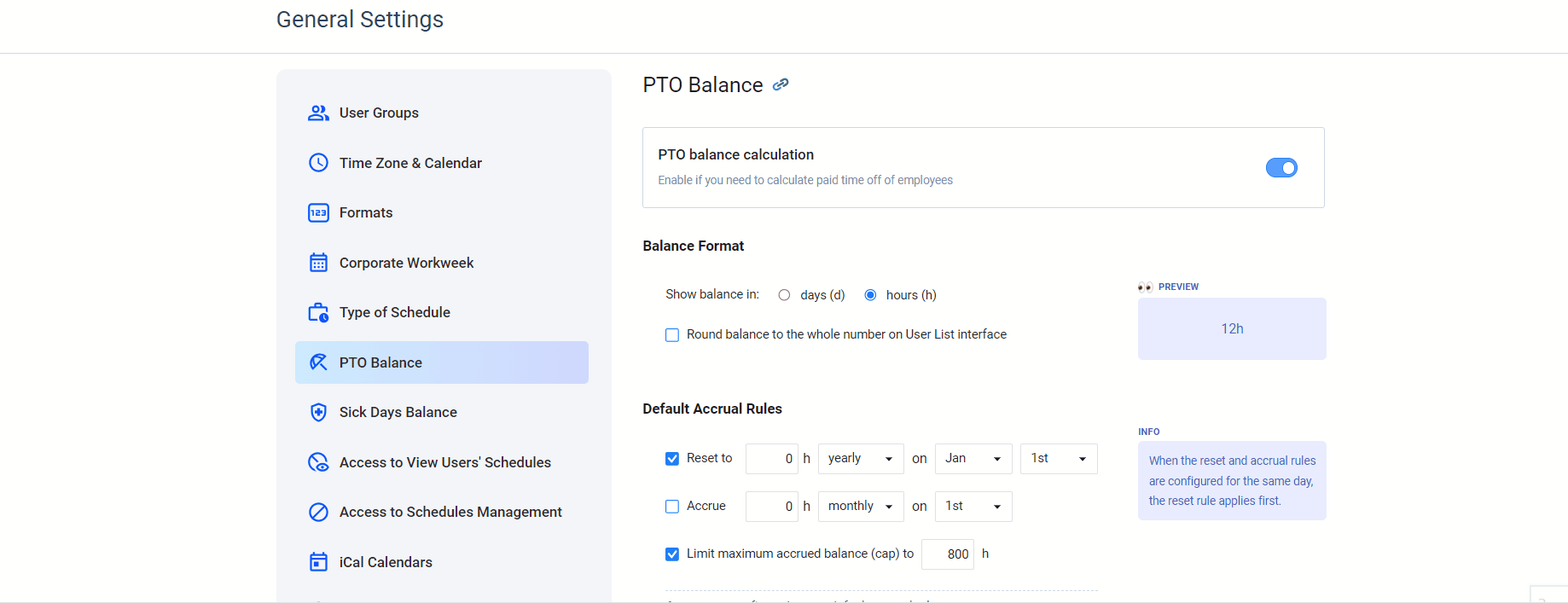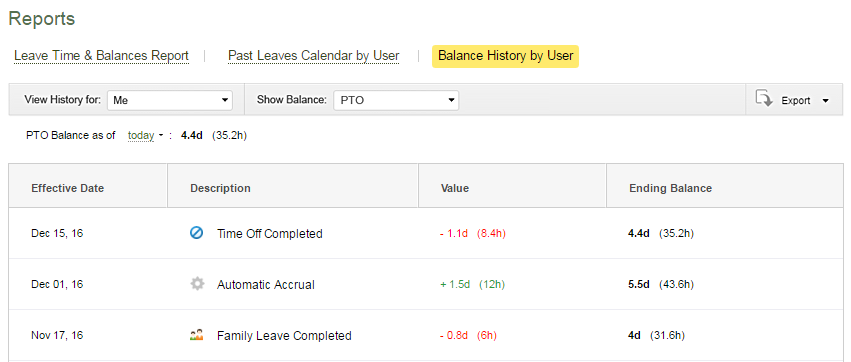Do part-time workers earn PTO in the United States and across the globe? The answer depends largely on the employer and regional policies.
In this post, we explore the basics of PTO calculation for part-time workers, see what the law says in different countries, and provide some concrete examples to make it easier for you to understand the process.
What Is a Part-Time Employee?
Essentially, a part-time employee is someone who works fewer hours than their full-time counterparts:
- In the United States, the Fair Labor Standards Act (FLSA) doesn’t exactly pin down what “part-time” means, leaving it up to companies to decide. Generally, though, anyone working less than 35 to 40 hours a week can be considered part-time.
- Looking globally, countries like Australia and Canada follow a similar approach, with part-time employees generally working less than 38 or 40 hours per week, respectively.
Do Part-Time Workers Earn PTO According to the Law?
United States
In the US, PTO policies for part-time employees largely depend on the employer.
There’s no federal law mandating PTO for any worker – full-time or part-time – so companies can decide how (or if) PTO is accumulated. This freedom allows businesses to tailor roles to fit their operational needs, but it also means part-time giggers might miss out on benefits like health insurance or paid vacation, which some full-time roles offer.
Many employers offer pro-rated PTO to part-timers based on the hours they work, but it’s not a universal practice.
United Kingdom
Across the pond in the UK, things are a bit different.
The UK is pretty forward-thinking with its employment rules, which ensure part-time employees get at least 5.6 weeks of paid holiday annually, pro-rated to match their working hours. That means even if someone is working two days a week, they still have a legal entitlement to paid holidays!
European Union
The EU’s Part-Time Work Directive mandates that part-time employees should not be treated less favorably than their full-time counterparts solely based on their reduced hours. This means part-timers in Europe often enjoy more equitable access to benefits and protections, making the part-time lifestyle potentially more appealing over there.
How to Accrue PTO for Part-Time Employees
Accruing PTO for part-time employees, start by considering the number of hours a part-timer works compared to their full-time counterparts. It’s often useful to calculate PTO on a pro-rata basis, giving them a proportional amount of PTO relative to the hours they put in.
Another popular method is the accrual-by-hour approach, where employees earn a certain amount of PTO for each hour they work. This method ensures everyone knows exactly how their time off is stacking up, and there’s something quite satisfying in watching those hours build up.
Let’s break it down using some examples:
Example 1: PTO accrual by hour
- Determine the PTO rate. First, choose a basic accrual rate based on company policy, like 0.04 hours of PTO for every hour worked. This rate is approximately equal to 2 hours of PTO for every full 50 hours worked – a solid approach for a balanced work-life vibe.
- Calculate PTO accrual. Multiply the total hours worked by the PTO rate. Let’s say your part-time star worked 100 hours this month. You’d calculate 100 hours x 0.04, unveiling 4 hours of PTO – simple!
Want to make it even easier for yourself? Automate PTO accrual with actiPLANS:
- You can set custom PTO rates for different leave types, ensuring that every employee is rewarded appropriately for each hour worked.

- To further streamline this process, integrate your account with actiTIME to keep a precise track of work hours. This integration ensures that all PTO calculations are based on accurate, up-to-date data, making it a breeze to manage even the most intricate schedules. Part-time employees can effortlessly submit their leave requests, and with just a few clicks, managers can approve them, keeping the workflow smooth and efficient.
- Worried about discrepancies? No problem. You can manually adjust PTO balances whenever necessary, which offers flexibility and control over your time off policies.
- As a cherry on top, actiPLANS provides insightful reports that let you analyze data with ease, so that you can make informed decisions about employee leave trends and company policies.

With actiPLANS, managing PTO is not just easy – it’s intuitive and enjoyable. Try it out today!
Example 2: Prorated PTO
Prorated PTO is what companies use to give employees their fair share of time off based on how much of the year they’ve worked. Instead of getting the full year’s vacation days upfront, they allocate a chunk that matches up with how long an employee will actually be clocked in.
Here’s how to calculate it for a part-time worker:
- Understand the basics. First things first, get familiar with your company’s full-time PTO policy – think of it as your roadmap. Say your full-time colleagues get 80 hours of PTO per year. You want to use this as your starting point.
- Know the part-time hours. Identify the average hours your part-time employees work per week. For our example, imagine Jane, who works 20 hours every week.
- Do the math. Here’s where the numbers come into play. You need to prorate Jane’s PTO according to her hours. Since a full-time schedule is typically 40 hours per week, and Jane works 20, you calculate her PTO as follows: 80 / 20 = 40 hours a year.
- Break it down. For easier tracking, break Jane’s 40 hours of PTO down into increments she can accrue. If you want Jane to accrue her PTO as each pay period rolls by, let’s assume there are 26 pay periods in a year. So, Jane gets:
- 40 / 26 = approx. 1.54 hours per pay period.
5 Tips for Effective PTO Accrual for Part-Time Employees
- Understand legal requirements. Before setting up PTO policies, ensure you’re familiar with federal and state laws regarding part-time employees’ benefits. It’s crucial to comply with legal standards to avoid any potential disputes or penalties down the road. Knowledge is power, so arm yourself with the details!
- Proportional accrual strategy. Just because someone’s working fewer hours doesn’t mean they shouldn’t enjoy some well-earned time off. Implement a proportional accrual method, where employees earn PTO based on their actual hours worked. This way, everyone gets a fair shake, and it promotes a sense of equity within the team.
- Flexible PTO policies. Life is unpredictable and offering flexible PTO policies can be a game changer. Allow part-time employees to use their accumulated PTO in ways that best suit their needs, whether it’s a few hours for an appointment or a full day to unwind. Flexibility can boost morale and loyalty.
- Educate and communicate. Keep the lines of communication open. Make sure your part-time staff understands the ins and outs of how PTO accrues. Providing clear and regular updates prevents any confusion and ensures everyone is on the same page. It might be administrative, but it can be made engaging with a few well-chosen meetings or newsletters.
- Encourage usage. PTO is a tool for rest and recuperation, not just an accrual figure. Encourage your part-time team members to actually use their PTO. Discuss the benefits of taking time off and share how it can positively impact their productivity and well-being. Remember, a well-rested team is a productive and happy one!
Conclusion
Whether part-time workers earn PTO largely depends on company policies and the legal framework within their region. However, the value of providing balanced benefits to all staff members, including part-time employees, is undeniable.
So, if you’re thinking of whether to offer PTO to part-time workers, don’t let this decision overwhelm you – just simplify your PTO management with actiPLANS! It streamlines the entire process, ensuring every PTO hour is accounted for effortlessly.
Click the link below to experience how actiPLANS can improve your PTO management today.



